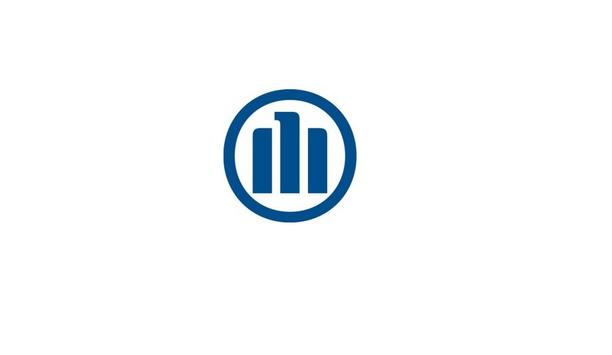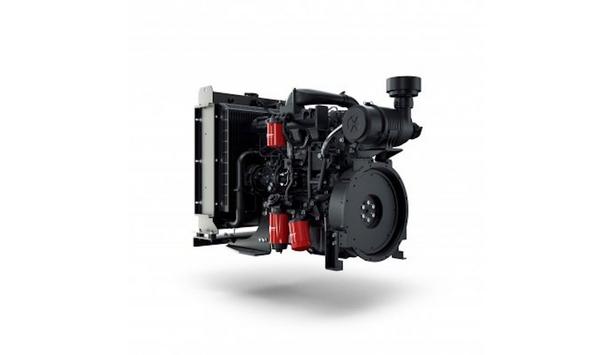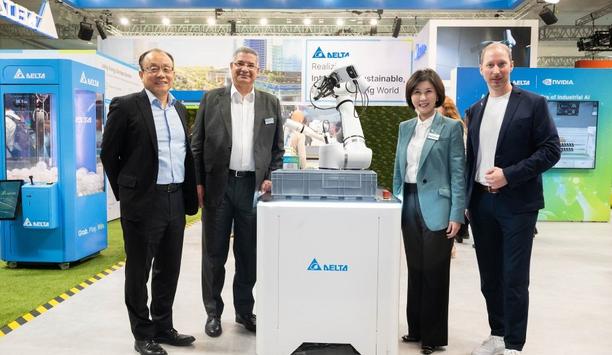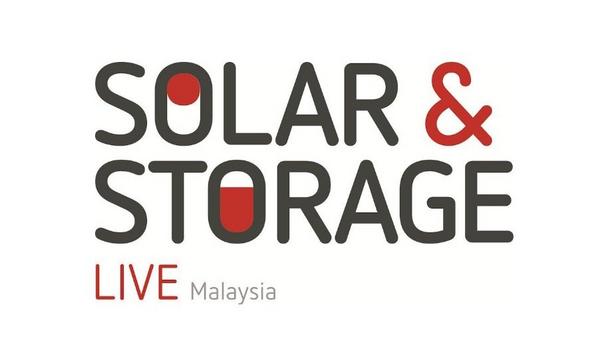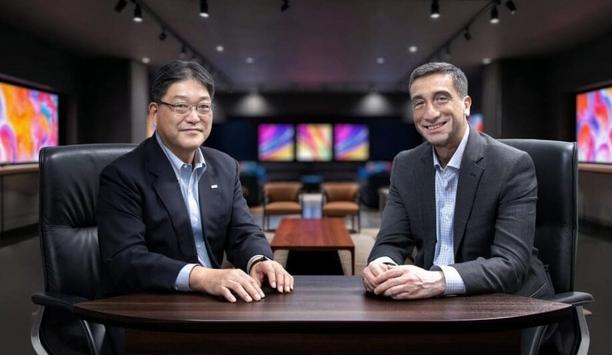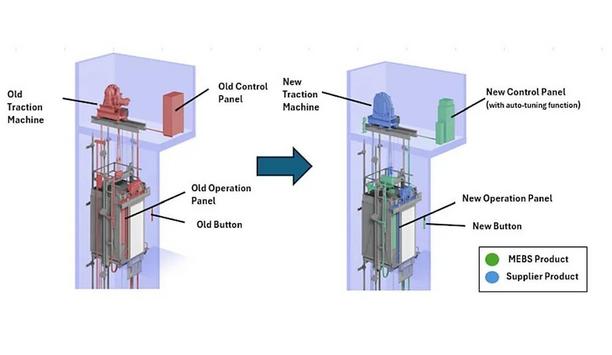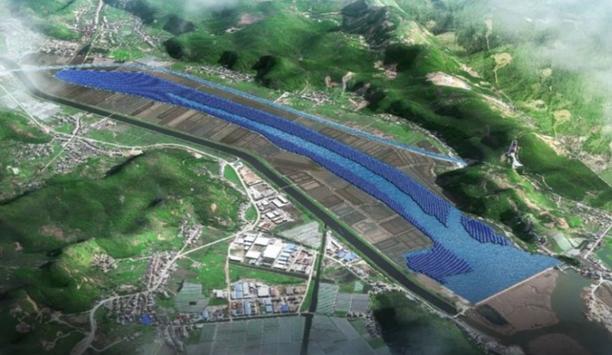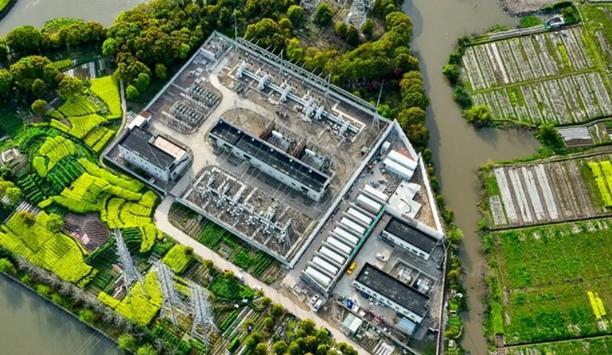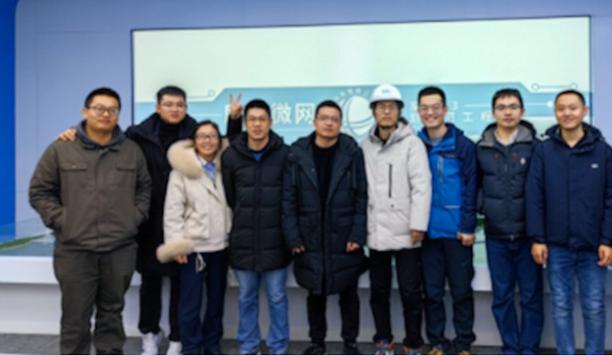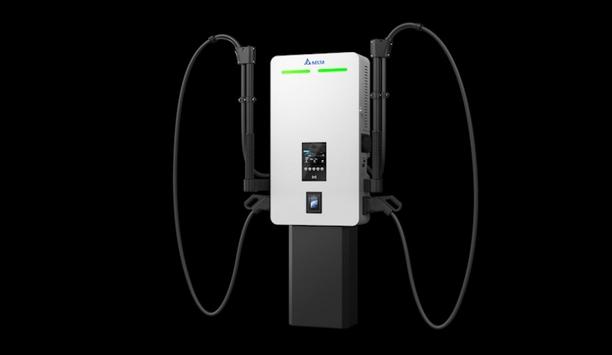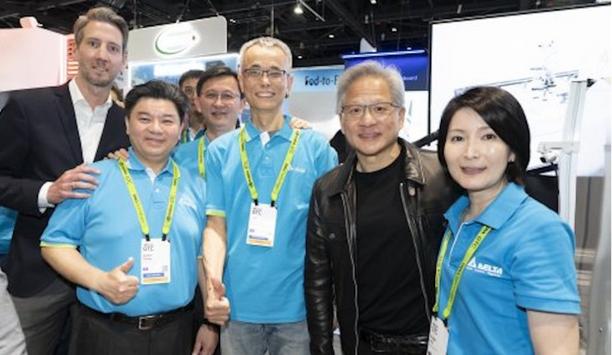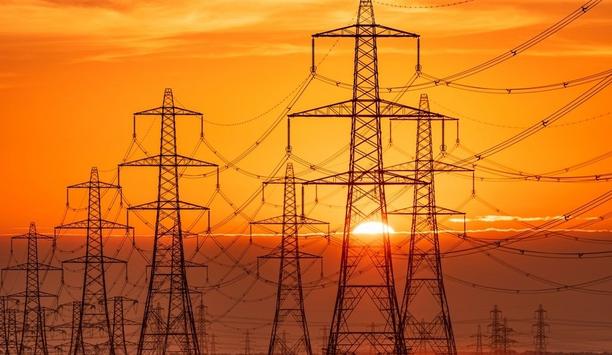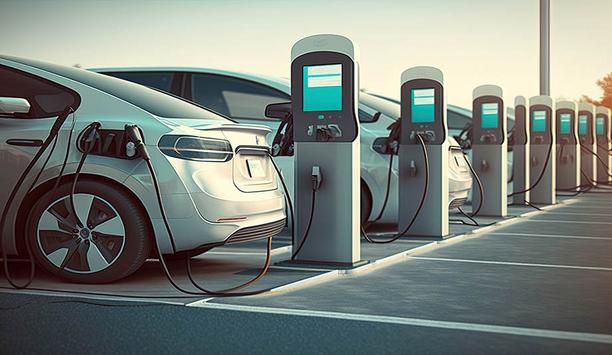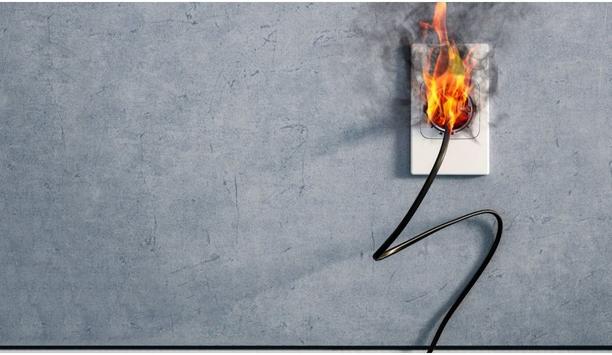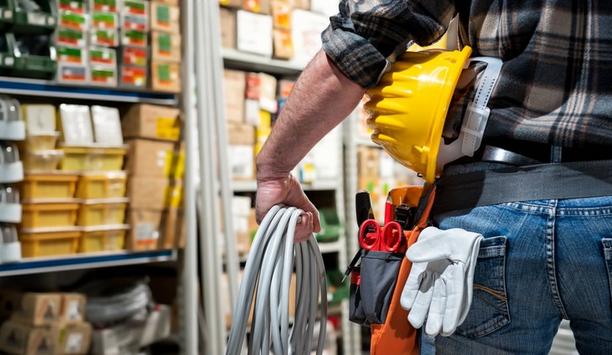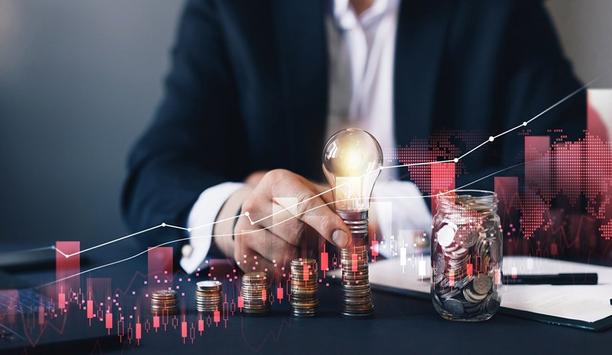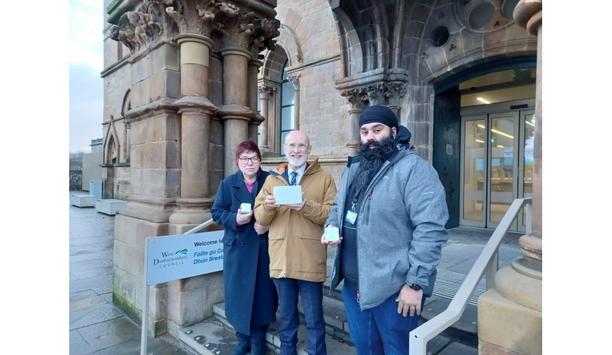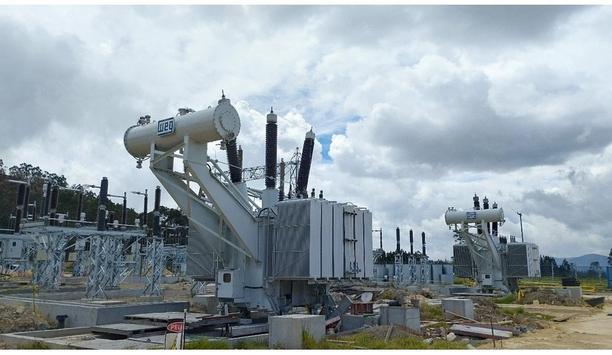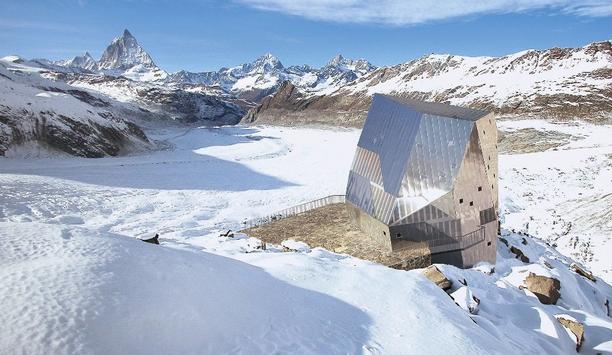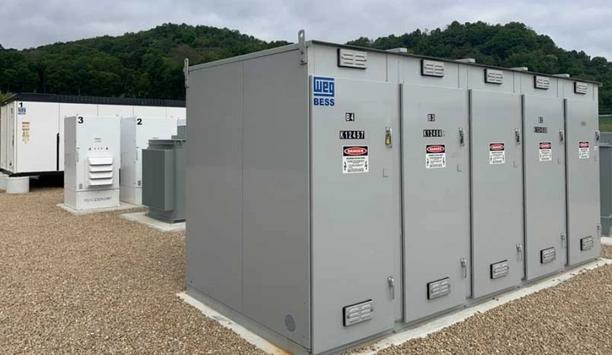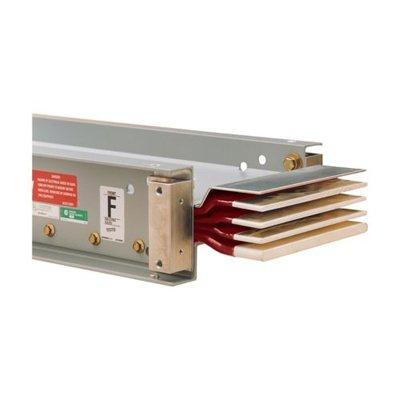Solar Power
Allianz Engineering has introduced a new inspection service for solar photovoltaic (PV) systems, aimed at businesses and industrial sites. As the UK ramps up its use of solar energy, spurred by government incentives and growing public interest in sustainability, regular inspections are becoming increasingly important. This new service extends the existing ‘Electrical Fixed Wiring Inspection’ to include regular checks and tests for solar PV systems. It can be used alone or alongside...
In the ever-evolving landscape of electrical services, the journey towards condition monitoring represents a significant leap forward. Now, customers face challenges, such as aging workforce and infrastructure, rising cost of energy and operation, and lack of transparency to the condition of key building systems. Dealing with these challenges will require a transformation driven by the need for enhanced reliability, efficiency, and safety in electrical distribution systems, with increased autom...
FPT Industrial, the Iveco Group brand dedicated to the design, production, and sale of powertrains and solutions for on- and off-road vehicles, as well as marine and power generation applications, will be heading to Dubai to exhibit at Middle East Energy, one of the most reputable and long-established events in the energy industry, being held from April 7 to 9. The brand will be present alongside its distributor network at Booth S2.C40, showcasing a selection of its offerings for the power gene...
Delta, a global pioneer in power management and smart green solutions, highlighted at Hannover Messe 2025 a versatile set of AI-driven smart manufacturing, energy infrastructure, and data centre solutions. These include, the award-winning D-Bot series cobots, featuring advanced cognitive capabilities and integration with NVIDIA Omniverse to develop next-generation digital twins; and DeltaGrid®, the AI-enabled energy management platform to optimize efficiency in the energy infrastructure sup...
Solar & Storage Live Malaysia 2025 launches in Kuala Lumpur on 9 and 10 April 2025, aimed at helping Malaysia make significant strides towards a more sustainable future and meet its renewable energy generation targets. Held at the Malaysia International Trade and Exhibition Center (MITEC), the free-to-attend expo and conference brings together thousands of industry pioneers, developers, installers, policymakers, technology experts, solution providers, investors, and innovators under one roo...
Hitachi Astemo, Ltd. (hereafter “Astemo”) and GlobalLogic Inc. (hereafter “GlobalLogic”) have been strengthening their collaboration to lead the trends of software-defined vehicles. Astemo President & CEO, Kohei Takeuchi and GlobalLogic CEO, Nitesh Banga discussed the future of mobility through digital transformation. As a global mega-supplier, Astemo has been providing tangible value in the In-Car domain as internal vehicle technology, such as software that enables...
News
Mitsubishi Electric Building Solutions Corporation (MEBS, Head Office: Chiyoda-Ku, Tokyo; President: Iwao Oda) announced the launch scheduled for 19 March of a new overseas control renewal menu for elevators made by other companies installed in existing buildings. By developing a new control panel with an auto-tuning function, MEBS will respond to the diverse needs of its overseas customers for the renewal of control systems for elevators, while spurring the expansion of its maintenance and renewal business. Main Features of Renewal Menu 1) Achieving control that maximizes ride comfort even with other companies' traction machines through auto-tuning It is possible to upgrade to the latest control system by utilizing an MEBS control panel together with a traction machine made by another company. The newly developed control panel equipped with an auto-tuning function estimates the characteristics of the other company’s traction machine and automatically derives the control parameters for the combination of the other company’s traction machine and the MEBS control panel. This eliminates the need to develop a dedicated control panel for the traction machine and improves ride comfort. 2) Improving safety and contributing to sustainability by promoting the renewal of existing elevators The renewal menu promotes the renewal of existing elevators to improve safety and convenience, and contributes to sustainability by reducing power consumption and waste emissions through the reuse of some of the equipment. The menu also reduces downtime by eliminating the need to replace all of the equipment. 3) Achieving improved convenience in response to diversifying building solution needs By adopting the renewal menu, it is possible to introduce integrated building solutions utilizing MEBS’s unique technologies such as the global remote-maintenance service M’s BRIDGE, DOAS (Destination Oriented Allocation System, elevator coordination with mobile robots, Elevator Call System with Smartphone, and BMS (Building Management System). Elevator parts manufacturers MEBS receives numerous requests from customers with existing elevators In the overseas elevator market, there are many elevator parts manufacturers and specialized elevator maintenance companies that respond to diverse customer needs. With such a wide variety of choices available, MEBS receives numerous requests from customers with existing elevators made by other companies to provide them with higher-quality services by renewing their control systems using the control panels. MEBS’s newly developed control panel Normally, when combining a control panel with a traction machine from a different manufacturer, it is necessary to develop an individual control panel that matches the characteristics of the traction machine. However, by adopting MEBS’s newly developed control panel equipped with an autotuning function, there is no need to develop a dedicated control panel for each traction machine, and the latest control technology can be introduced while utilizing other companies’ traction machines. New autotuning function-equipped control panel The control renewal menu has been limited to “ELEMOTION” for existing MEBS elevators As a result, performance can be improved while reducing costs and ensuring stable long-term operation. Until now, the control renewal menu has been limited to “ELEMOTION” for existing MEBS elevators, but with this new autotuning function-equipped control panel, they can now offer control renewal for existing elevators made by other companies, which will allow us to meet an even wider variety of customer needs. Outlook MEBS, which is in charge of the building systems business, a key growth area for Mitsubishi Electric, is planning to expand and accelerate the global elevator maintenance and renewal business as a priority strategy. Through this menu, they are aiming to renew 1,000 elevators annually by 2030, mainly in North America and Europe.
On May 30, the first 100MWp tidal photovoltaics power station in China was connected to the grid with full capacity. This is the first time that China has complementary developed solar and tidal energy. The successful grid connection of this power station marks that China has made new achievements in the field of comprehensive utilization of marine energy. NR Electric provides a complete set of protection and monitoring equipment for the project, and implements the engineering integration of 110kV multi terminal differential (four terminal differential) line protection and 5MW/5MWh energy storage primary frequency modulation system. Frequency modulation system This project is the first PV power station in Zhejiang Province to synchronously constructe and install 5MW/5MWh energy storage system. Goose communication is used inside the energy storage system to realize the millisecond fast response The whole station has achieved a high level of automation. In conjunction with Zhejiang Electric Power Research Institute, the first photovoltaic power station fast frequency modulation pilot project was officially comissioned, which perfectly upgraded the coordination among energy storage, SVG and inverter. Goose communication is used inside the energy storage system to realize the millisecond fast response of primary frequency modulation with photovoltaics and energy storage. Power station reservoir area Zhejiang Wenling tidal PV Power Station is located in Jiangxia Tidal Power Station and Reservoir Area, Taizhou , Zhejiang. The total area of the reservoir area is about 1.33 km. The rated installed capacity is 100MWp. The project implements a new construction model of "new green energy tidal energy + solar energy", makes full use of the water surface of the power station reservoir area. After being connected to the grid, it is estimated that the annual average on-grid power generation will be about 106.87 million kWh, which will save 32,600 tons of standard coal every year.
On June 17, 2022, the world's first 35kV high-voltage direct coupled energy storage system developed by NR was successfully connected to the grid in Shaoxing Hongxu energy storage power station in China. It not only helps to achieve the efficient use of clean energy and promote the green and low-carbon transformation, but also enhances the flexible regulation capacity of the power grid. High voltage direct coupled energy storage not only reduces the electrical distance from the main grid, but also has the advantages of stronger grid support effect, response consistency and higher conversion efficiency. Energy storage batteries The smooth operation of the project helps to explore and establish the standard of advance energy storage technology, promote the energy storage system to move towards a higher voltage level, larger capacity, safer, more reliable and more efficient direction, and can adapt to the characteristics of multiple types of energy storage batteries, making a useful attempt for the development direction of energy storage. The whole system uses a cascade topology to distribute the batteries to each PCS module The whole system uses a cascade topology to distribute the batteries to each PCS module. The reliability of the whole energy storage system is effectively improved through the integrated closed self-circulation air cooling technology and online thermal redundancy technology. At the same time, the multi-level active equalization technology is used to greatly improve the utilization of the battery and eliminate the "short board effect" of the battery cluster. Green power systems NR has provided a complete set of solutions for Shaoxing 35kV high voltage direct coupled energy storage system, including energy management system (EMS), Power Management System (PMS), high and low voltage full series air / liquid cooled Power conversion system (PCS), and battery management system (BMS). NR will continue to do a good job in the exploration of new energy storage systems, promote the research and practice of grid-forming energy storage application, and make more contributions to the construction of green power systems.
Luxi Island microgrid system, which was designed, supplied, commissioned and delivered by NR, has been successfully put into operation. The system effectively solved the black start problem of 10kV feeder level microgrid with impulsive load, and has won high recognition from users with an advanced and intelligent control strategy, a stable and reliable microgrid system. Power supply of Luxi Island The power supply of Luxi Island was transmitted remotely by submarine cables Luxi Island is located on the east coast of China. The power supply of Luxi Island was transmitted remotely by submarine cables, which was easy to cause power supply interruption due to cable and tower damage. Due to the weak load carrying capacity of the original microgrid system, complex black start steps, difficult operation and low success rate, once the power was cut off, the recovery time was long, which seriously affects the production and life of residents on the island. Microgrid energy management system NR provides microgrid integrated solutions, including a microgrid energy management system, a microgrid coordination controller, an energy storage converter, and other core equipment, which effectively solves the existing problems. A microgrid system was required to quickly restore power supply after a power loss of the large power grid, and the black start function was the most important means to restore power supply and an important guarantee for the stable operation of the system. 10kV distribution network feeders usually have a large number of T-connected transformers, large load capacity. Research of microgrid technology NR successfully realized the black start function under the condition of full input of 10kV The simultaneous start of transformer inrush current and a large number of motor loads was easy lead to black start failure. The automation level of the existing distribution network system was low, relying on the manual opening and closing switch of the operation and maintenance personnel, and the power failure time of the system was long. In view of these problems, based on the long-term accumulation in the research of microgrid technology, NR successfully realized the black start function under the condition of full input of 10kV feeder load through intelligent one-key black start control and flexible synchronous parallel start technology of multiple converters. Technical advantages of NR The whole process took less than 10s from the issuance of command to the stable establishment of bus voltage, and quickly realized power supply restoration of 18 transformers, 1359 resident users and 177 non-resident users. The power supply reliability of Luxi Island has been significantly improved. The successful implementation of the project has further consolidated the technical advantages of NR in the field of microgrid, and provided the solution for the local autonomy of the new distribution system with high distributed energy resource penetration. NR will continue to practice the corporate purpose of "creating value and serving society", and contribute more to the development of a reliable green power system.
Delta, a pioneer in power management and a provider of IoT-based smart green solutions, announced the launch of its next-generation DC Wallbox 50kW EV charger. Designed to meet the demands of public and commercial charging applications, the upgraded model delivers advanced functionality and an optimized user-centric experience, ensuring seamless and efficient charging for both operators and electric vehicle (EV) drivers. EV charging infrastructure "The next-generation DC Wallbox 50kW exemplifies Delta's dedication to advancing the EV charging infrastructure with solutions that are both practical and innovative," said Arto Suni, Senior Director Electric Vehicle Charging Solutions, Delta Electronics EMEA. "By integrating payment systems, enhancing usability, and prioritizing safety, we are delivering a new benchmark in quick and convenient public and commercial EV charging." Advanced Functionality Integrated Meter and Payment Terminal: The next-generation DC Wallbox 50kW integrates a certified energy metering system and a credit card terminal for ad-hoc payment. This system enables secure, pre-authorized transactions, simplifying the payment process for EV drivers and ensuring accurate billing. With support for contactless cards, mobile payments, and RFID authentication, the charger ensures a quick and convenient payment experience. Enhanced Charging Status Light: A new charging status light on the front panel provides clear, real-time visual indicators of the charger's status. This intuitive feature enables EV drivers to easily identify available charge points, optimizing the overall user experience. Advanced Cable Management System: Delta's advanced cable management system offers a safe, durable, and user-friendly solution for cable handling. By minimizing clutter, protecting cables from wear and tear, and facilitating easy access, this system enhances safety and convenience, making the charger ideal for commercial EV fleets and public charging stations. Building on Success The next-generation DC Wallbox 50kW retains the key features that made its predecessor a market pioneer, including: High Efficiency: Achieves a 97% energy conversion rate, significantly reducing electricity loss and operational costs. Compact Design: With a slim 25cm profile, it saves up to 60% of installation space compared to conventional chargers, making it suitable for space-constrained locations. Dual Charging Output: Supports simultaneous DC charging through two output guns to accommodate a wide range of EV models and optimize usage turnover. Robust Connectivity: Built-in Ethernet and wireless communication enable efficient remote management and maintenance. The DC Wallbox 50kW underscores Delta's commitment to providing high-performance, space-efficient, and sustainable charging solutions that cater to the growing global demand for electric mobility.
Delta, a pioneer in power management and a provider of IoT-based smart green solutions, unveiled its broad spectrum of next-generation power and liquid cooling solutions at NVIDIA GTC 2025. These solutions are designed to bolster the performance and energy conservation in NVIDIA-enabled AI and HPC data centers, including the newly launched Power Capacitance Shelves and in-row 1.5MW liquid-to-liquid Coolant Distribution Units (CDU). NVIDIA Omniverse™ platform Delta’s AI-based Smart Solutions converge with NVIDIA Omniverse™ and NVIDIA Isaac Sim platforms The showcase also demonstrates how Delta’s AI-based Smart Manufacturing Solutions converge with NVIDIA Omniverse™ and NVIDIA Isaac Sim platforms to achieve seamless cyber-physical integration and enhance the productivity and flexibility of smart production processes in diverse manufacturing applications. Ping Cheng, Delta’s Chairman and CEO, said, “Delta strives to collaborate with our customers to provide smart and energy-efficient solutions capable of accelerating the development of the AI industry while fostering sustainability." Integrated with AI technologies Cheng added: "Our showcase at this year’s GTC demonstrates innovative power and cooling solutions for AI data centers, quite a few of which were designed with NVIDIA for their next-generation GPU architecture, as well as a smart manufacturing demo line integrated with AI technologies." "Moreover, our D-Bot cobot, power and cooling solutions for the NVIDIA MGX platform are also being featured. This comprehensive solutions portfolio for both cloud data centers and edge applications is a testament to Delta’s unique innovation prowess in the AI era.” Key highlights at the Delta booth #1023 at NVIDIA GTC 2025 AI-based Smart Manufacturing Demo Line Delta has leveraged its unique smart manufacturing expertise and system integration capabilities to develop five smart production scenarios of PC board assembly, which visitors will have the opportunity to interact with on-site. IIoT-based Line Manager enables remote control, autonomous exhibit line functions, and data analytics The AI-based Smart Manufacturing Demo Line features an ecosystem in which Delta’s D-Bot series Collaborative Robots (cobots), Omni® inserter, Integra® modular glue dispensing machine, DIATwin digital twin system, and IIoT-based Line Manager platform, collaborate along with NVIDIA Omniverse and Isaac Sim to enable cyber-physical production with virtual reality synchronization, virtual commissioning and product parameter input, smart production recipe generation and management, automated production line changeover, automated collision avoidance, and more. The IIoT-based Line Manager enables remote control, autonomous production line operations, and data analytics. By uploading product recipe parameters to Line Manager, manufacturers can quickly changeover between different product manufacturing processes while dynamically optimizing process parameters such as processing route and speed, achieving seamless automated mixed-model production. Power Solutions for AI and HPC Data Centers Delta is launching a new Power Capacitance Shelf at GTC. Designed to ensure a stable power supply for AI and cloud computing servers, this system boasts built-in lithium-ion capacitors (LIC), high power density and long hold-up time (5-second/15kW load) to perform fast charge/discharge so as to mitigate the GPU dynamic load reflections (AI server EDPP and idle mode transitions) to the AC electricity grid. In addition, the new 19-inch 1RU 66kW AC-DC Server Power Shelf offers industry-pioneering efficiency up to 97.5%. In traditional AI data centers, AI servers commonly occupy up to 3/4 of rack space, leaving limited room for power supply, backup power, and power capacitance systems. Delta’s New HVDC Server Power Solution Delta is also showcasing new parallel HVDC Modules for 800Vdc to 50/12Vdc power conversion Delta’s new HVDC server power solution, designed through collaboration with NVIDIA, helps IT managers solve that challenge by offering groundbreaking power supply capacities. The solution includes the newly-developed 72kW AC-DC Server Power Shelf to convert 400-480Vac from the transformer to 800Vdc with efficiency up to 98% while the new 90kW DC-DC Server Power Shelf converts 800Vdc to 50Vdc with efficiency as high as 98.5%. Lastly, Delta is also showcasing new parallel HVDC Modules for 800Vdc to 50/12Vdc power conversion and with power density up to 2,500W/inch3. Delta-Designed Rack for the NVIDIA MGX Platform The industry’s first ORV3 Inverter Power System for 2.5kVA/230Vac, and the new 2RU compact 22kW Battery Backup System to support 48Vdc systems with up to 60 seconds of backup time and surge load capability, are also featured. The Delta-designed rack for the NVIDIA MGX platform, offers a 1,400A busbar as well as 42RU manifold, is also exhibited along with key Delta solutions, such as management switches, server cooling solutions, 1RU inverter shelves, 1RU 55kW power shelves (3 phase), 72kW HVDC power shelves and 90kW DC-DC power shelves, 19’’ power capacitance systems, 2RU 22kW Battery Backup Power, and 4RU L2L CDUs. Liquid and Air Cooling Solutions for AI Data Centers and GPU Systems New rack fans capable of supporting other rack power architectures, including HVDC (400-800Vdc) The newly launched 1.5MW L2L (liquid-to-liquid) CDU, approved into the privileged NVIDIA RVL and AVL lists, is specifically designed to handle the thermal management challenges of multiple high-density racks, which can exceed 100kW capacity each. Delta’s liquid cooling solutions showcase also includes Cold Plate Loops, designed for the latest NVIDIA GPU/CPU to operate in conjunction with Delta’s 4RU L2L In-Rack CDUs for NVL72/36 as a complete rack scale cooling solution, as well as the powerful new 6RU in-rack CDU design with 200kW cooling capacity for next-generation chips. Also featured are cutting-edge air cooling options, including the new 3D Vapor Chamber boasting 1000W cooling capacity in a 4RU form factor, server fan achieving 20% performance increase versus prior models, and new rack fans capable of supporting different rack power architectures including HVDC (400-800Vdc). Passive Components for AI and HPC Data Centers Delta’s new High Density Power Chokes (dual/quad) support GPU operations under high current and high temperature (up to 150oC) conditions. For power and IT shelves operating in the high current (4000-8000A), high voltage (±400V), and high frequency (10-100MHz) conditions, the newly-launched Core-Shell Liquid Cooling Busbars offer power dissipation up to 400kW with ultra-low inductance and superior performance. Welcome to Delta’s booth #1023 at NVIDIA GTC 2025 to learn how Delta and NVIDIA collaborate to usher a new era of AI-based smart manufacturing and energy conservation in the AI realm.
Mitsubishi Electric Building Solutions Corporation (MEBS, Head Office: Chiyoda-Ku, Tokyo; President: Iwao Oda) announced the launch scheduled for 19 March of a new overseas control renewal menu for elevators made by other companies installed in existing buildings. By developing a new control panel with an auto-tuning function, MEBS will respond to the diverse needs of its overseas customers for the renewal of control systems for elevators, while spurring the expansion of its maintenance and renewal business. Main Features of Renewal Menu 1) Achieving control that maximizes ride comfort even with other companies' traction machines through auto-tuning It is possible to upgrade to the latest control system by utilizing an MEBS control panel together with a traction machine made by another company. The newly developed control panel equipped with an auto-tuning function estimates the characteristics of the other company’s traction machine and automatically derives the control parameters for the combination of the other company’s traction machine and the MEBS control panel. This eliminates the need to develop a dedicated control panel for the traction machine and improves ride comfort. 2) Improving safety and contributing to sustainability by promoting the renewal of existing elevators The renewal menu promotes the renewal of existing elevators to improve safety and convenience, and contributes to sustainability by reducing power consumption and waste emissions through the reuse of some of the equipment. The menu also reduces downtime by eliminating the need to replace all of the equipment. 3) Achieving improved convenience in response to diversifying building solution needs By adopting the renewal menu, it is possible to introduce integrated building solutions utilizing MEBS’s unique technologies such as the global remote-maintenance service M’s BRIDGE, DOAS (Destination Oriented Allocation System, elevator coordination with mobile robots, Elevator Call System with Smartphone, and BMS (Building Management System). Elevator parts manufacturers MEBS receives numerous requests from customers with existing elevators In the overseas elevator market, there are many elevator parts manufacturers and specialized elevator maintenance companies that respond to diverse customer needs. With such a wide variety of choices available, MEBS receives numerous requests from customers with existing elevators made by other companies to provide them with higher-quality services by renewing their control systems using the control panels. MEBS’s newly developed control panel Normally, when combining a control panel with a traction machine from a different manufacturer, it is necessary to develop an individual control panel that matches the characteristics of the traction machine. However, by adopting MEBS’s newly developed control panel equipped with an autotuning function, there is no need to develop a dedicated control panel for each traction machine, and the latest control technology can be introduced while utilizing other companies’ traction machines. New autotuning function-equipped control panel The control renewal menu has been limited to “ELEMOTION” for existing MEBS elevators As a result, performance can be improved while reducing costs and ensuring stable long-term operation. Until now, the control renewal menu has been limited to “ELEMOTION” for existing MEBS elevators, but with this new autotuning function-equipped control panel, they can now offer control renewal for existing elevators made by other companies, which will allow us to meet an even wider variety of customer needs. Outlook MEBS, which is in charge of the building systems business, a key growth area for Mitsubishi Electric, is planning to expand and accelerate the global elevator maintenance and renewal business as a priority strategy. Through this menu, they are aiming to renew 1,000 elevators annually by 2030, mainly in North America and Europe.
On May 30, the first 100MWp tidal photovoltaics power station in China was connected to the grid with full capacity. This is the first time that China has complementary developed solar and tidal energy. The successful grid connection of this power station marks that China has made new achievements in the field of comprehensive utilization of marine energy. NR Electric provides a complete set of protection and monitoring equipment for the project, and implements the engineering integration of 110kV multi terminal differential (four terminal differential) line protection and 5MW/5MWh energy storage primary frequency modulation system. Frequency modulation system This project is the first PV power station in Zhejiang Province to synchronously constructe and install 5MW/5MWh energy storage system. Goose communication is used inside the energy storage system to realize the millisecond fast response The whole station has achieved a high level of automation. In conjunction with Zhejiang Electric Power Research Institute, the first photovoltaic power station fast frequency modulation pilot project was officially comissioned, which perfectly upgraded the coordination among energy storage, SVG and inverter. Goose communication is used inside the energy storage system to realize the millisecond fast response of primary frequency modulation with photovoltaics and energy storage. Power station reservoir area Zhejiang Wenling tidal PV Power Station is located in Jiangxia Tidal Power Station and Reservoir Area, Taizhou , Zhejiang. The total area of the reservoir area is about 1.33 km. The rated installed capacity is 100MWp. The project implements a new construction model of "new green energy tidal energy + solar energy", makes full use of the water surface of the power station reservoir area. After being connected to the grid, it is estimated that the annual average on-grid power generation will be about 106.87 million kWh, which will save 32,600 tons of standard coal every year.
On June 17, 2022, the world's first 35kV high-voltage direct coupled energy storage system developed by NR was successfully connected to the grid in Shaoxing Hongxu energy storage power station in China. It not only helps to achieve the efficient use of clean energy and promote the green and low-carbon transformation, but also enhances the flexible regulation capacity of the power grid. High voltage direct coupled energy storage not only reduces the electrical distance from the main grid, but also has the advantages of stronger grid support effect, response consistency and higher conversion efficiency. Energy storage batteries The smooth operation of the project helps to explore and establish the standard of advance energy storage technology, promote the energy storage system to move towards a higher voltage level, larger capacity, safer, more reliable and more efficient direction, and can adapt to the characteristics of multiple types of energy storage batteries, making a useful attempt for the development direction of energy storage. The whole system uses a cascade topology to distribute the batteries to each PCS module The whole system uses a cascade topology to distribute the batteries to each PCS module. The reliability of the whole energy storage system is effectively improved through the integrated closed self-circulation air cooling technology and online thermal redundancy technology. At the same time, the multi-level active equalization technology is used to greatly improve the utilization of the battery and eliminate the "short board effect" of the battery cluster. Green power systems NR has provided a complete set of solutions for Shaoxing 35kV high voltage direct coupled energy storage system, including energy management system (EMS), Power Management System (PMS), high and low voltage full series air / liquid cooled Power conversion system (PCS), and battery management system (BMS). NR will continue to do a good job in the exploration of new energy storage systems, promote the research and practice of grid-forming energy storage application, and make more contributions to the construction of green power systems.
Luxi Island microgrid system, which was designed, supplied, commissioned and delivered by NR, has been successfully put into operation. The system effectively solved the black start problem of 10kV feeder level microgrid with impulsive load, and has won high recognition from users with an advanced and intelligent control strategy, a stable and reliable microgrid system. Power supply of Luxi Island The power supply of Luxi Island was transmitted remotely by submarine cables Luxi Island is located on the east coast of China. The power supply of Luxi Island was transmitted remotely by submarine cables, which was easy to cause power supply interruption due to cable and tower damage. Due to the weak load carrying capacity of the original microgrid system, complex black start steps, difficult operation and low success rate, once the power was cut off, the recovery time was long, which seriously affects the production and life of residents on the island. Microgrid energy management system NR provides microgrid integrated solutions, including a microgrid energy management system, a microgrid coordination controller, an energy storage converter, and other core equipment, which effectively solves the existing problems. A microgrid system was required to quickly restore power supply after a power loss of the large power grid, and the black start function was the most important means to restore power supply and an important guarantee for the stable operation of the system. 10kV distribution network feeders usually have a large number of T-connected transformers, large load capacity. Research of microgrid technology NR successfully realized the black start function under the condition of full input of 10kV The simultaneous start of transformer inrush current and a large number of motor loads was easy lead to black start failure. The automation level of the existing distribution network system was low, relying on the manual opening and closing switch of the operation and maintenance personnel, and the power failure time of the system was long. In view of these problems, based on the long-term accumulation in the research of microgrid technology, NR successfully realized the black start function under the condition of full input of 10kV feeder load through intelligent one-key black start control and flexible synchronous parallel start technology of multiple converters. Technical advantages of NR The whole process took less than 10s from the issuance of command to the stable establishment of bus voltage, and quickly realized power supply restoration of 18 transformers, 1359 resident users and 177 non-resident users. The power supply reliability of Luxi Island has been significantly improved. The successful implementation of the project has further consolidated the technical advantages of NR in the field of microgrid, and provided the solution for the local autonomy of the new distribution system with high distributed energy resource penetration. NR will continue to practice the corporate purpose of "creating value and serving society", and contribute more to the development of a reliable green power system.
Delta, a pioneer in power management and a provider of IoT-based smart green solutions, announced the launch of its next-generation DC Wallbox 50kW EV charger. Designed to meet the demands of public and commercial charging applications, the upgraded model delivers advanced functionality and an optimized user-centric experience, ensuring seamless and efficient charging for both operators and electric vehicle (EV) drivers. EV charging infrastructure "The next-generation DC Wallbox 50kW exemplifies Delta's dedication to advancing the EV charging infrastructure with solutions that are both practical and innovative," said Arto Suni, Senior Director Electric Vehicle Charging Solutions, Delta Electronics EMEA. "By integrating payment systems, enhancing usability, and prioritizing safety, we are delivering a new benchmark in quick and convenient public and commercial EV charging." Advanced Functionality Integrated Meter and Payment Terminal: The next-generation DC Wallbox 50kW integrates a certified energy metering system and a credit card terminal for ad-hoc payment. This system enables secure, pre-authorized transactions, simplifying the payment process for EV drivers and ensuring accurate billing. With support for contactless cards, mobile payments, and RFID authentication, the charger ensures a quick and convenient payment experience. Enhanced Charging Status Light: A new charging status light on the front panel provides clear, real-time visual indicators of the charger's status. This intuitive feature enables EV drivers to easily identify available charge points, optimizing the overall user experience. Advanced Cable Management System: Delta's advanced cable management system offers a safe, durable, and user-friendly solution for cable handling. By minimizing clutter, protecting cables from wear and tear, and facilitating easy access, this system enhances safety and convenience, making the charger ideal for commercial EV fleets and public charging stations. Building on Success The next-generation DC Wallbox 50kW retains the key features that made its predecessor a market pioneer, including: High Efficiency: Achieves a 97% energy conversion rate, significantly reducing electricity loss and operational costs. Compact Design: With a slim 25cm profile, it saves up to 60% of installation space compared to conventional chargers, making it suitable for space-constrained locations. Dual Charging Output: Supports simultaneous DC charging through two output guns to accommodate a wide range of EV models and optimize usage turnover. Robust Connectivity: Built-in Ethernet and wireless communication enable efficient remote management and maintenance. The DC Wallbox 50kW underscores Delta's commitment to providing high-performance, space-efficient, and sustainable charging solutions that cater to the growing global demand for electric mobility.
Delta, a pioneer in power management and a provider of IoT-based smart green solutions, unveiled its broad spectrum of next-generation power and liquid cooling solutions at NVIDIA GTC 2025. These solutions are designed to bolster the performance and energy conservation in NVIDIA-enabled AI and HPC data centers, including the newly launched Power Capacitance Shelves and in-row 1.5MW liquid-to-liquid Coolant Distribution Units (CDU). NVIDIA Omniverse™ platform Delta’s AI-based Smart Solutions converge with NVIDIA Omniverse™ and NVIDIA Isaac Sim platforms The showcase also demonstrates how Delta’s AI-based Smart Manufacturing Solutions converge with NVIDIA Omniverse™ and NVIDIA Isaac Sim platforms to achieve seamless cyber-physical integration and enhance the productivity and flexibility of smart production processes in diverse manufacturing applications. Ping Cheng, Delta’s Chairman and CEO, said, “Delta strives to collaborate with our customers to provide smart and energy-efficient solutions capable of accelerating the development of the AI industry while fostering sustainability." Integrated with AI technologies Cheng added: "Our showcase at this year’s GTC demonstrates innovative power and cooling solutions for AI data centers, quite a few of which were designed with NVIDIA for their next-generation GPU architecture, as well as a smart manufacturing demo line integrated with AI technologies." "Moreover, our D-Bot cobot, power and cooling solutions for the NVIDIA MGX platform are also being featured. This comprehensive solutions portfolio for both cloud data centers and edge applications is a testament to Delta’s unique innovation prowess in the AI era.” Key highlights at the Delta booth #1023 at NVIDIA GTC 2025 AI-based Smart Manufacturing Demo Line Delta has leveraged its unique smart manufacturing expertise and system integration capabilities to develop five smart production scenarios of PC board assembly, which visitors will have the opportunity to interact with on-site. IIoT-based Line Manager enables remote control, autonomous exhibit line functions, and data analytics The AI-based Smart Manufacturing Demo Line features an ecosystem in which Delta’s D-Bot series Collaborative Robots (cobots), Omni® inserter, Integra® modular glue dispensing machine, DIATwin digital twin system, and IIoT-based Line Manager platform, collaborate along with NVIDIA Omniverse and Isaac Sim to enable cyber-physical production with virtual reality synchronization, virtual commissioning and product parameter input, smart production recipe generation and management, automated production line changeover, automated collision avoidance, and more. The IIoT-based Line Manager enables remote control, autonomous production line operations, and data analytics. By uploading product recipe parameters to Line Manager, manufacturers can quickly changeover between different product manufacturing processes while dynamically optimizing process parameters such as processing route and speed, achieving seamless automated mixed-model production. Power Solutions for AI and HPC Data Centers Delta is launching a new Power Capacitance Shelf at GTC. Designed to ensure a stable power supply for AI and cloud computing servers, this system boasts built-in lithium-ion capacitors (LIC), high power density and long hold-up time (5-second/15kW load) to perform fast charge/discharge so as to mitigate the GPU dynamic load reflections (AI server EDPP and idle mode transitions) to the AC electricity grid. In addition, the new 19-inch 1RU 66kW AC-DC Server Power Shelf offers industry-pioneering efficiency up to 97.5%. In traditional AI data centers, AI servers commonly occupy up to 3/4 of rack space, leaving limited room for power supply, backup power, and power capacitance systems. Delta’s New HVDC Server Power Solution Delta is also showcasing new parallel HVDC Modules for 800Vdc to 50/12Vdc power conversion Delta’s new HVDC server power solution, designed through collaboration with NVIDIA, helps IT managers solve that challenge by offering groundbreaking power supply capacities. The solution includes the newly-developed 72kW AC-DC Server Power Shelf to convert 400-480Vac from the transformer to 800Vdc with efficiency up to 98% while the new 90kW DC-DC Server Power Shelf converts 800Vdc to 50Vdc with efficiency as high as 98.5%. Lastly, Delta is also showcasing new parallel HVDC Modules for 800Vdc to 50/12Vdc power conversion and with power density up to 2,500W/inch3. Delta-Designed Rack for the NVIDIA MGX Platform The industry’s first ORV3 Inverter Power System for 2.5kVA/230Vac, and the new 2RU compact 22kW Battery Backup System to support 48Vdc systems with up to 60 seconds of backup time and surge load capability, are also featured. The Delta-designed rack for the NVIDIA MGX platform, offers a 1,400A busbar as well as 42RU manifold, is also exhibited along with key Delta solutions, such as management switches, server cooling solutions, 1RU inverter shelves, 1RU 55kW power shelves (3 phase), 72kW HVDC power shelves and 90kW DC-DC power shelves, 19’’ power capacitance systems, 2RU 22kW Battery Backup Power, and 4RU L2L CDUs. Liquid and Air Cooling Solutions for AI Data Centers and GPU Systems New rack fans capable of supporting other rack power architectures, including HVDC (400-800Vdc) The newly launched 1.5MW L2L (liquid-to-liquid) CDU, approved into the privileged NVIDIA RVL and AVL lists, is specifically designed to handle the thermal management challenges of multiple high-density racks, which can exceed 100kW capacity each. Delta’s liquid cooling solutions showcase also includes Cold Plate Loops, designed for the latest NVIDIA GPU/CPU to operate in conjunction with Delta’s 4RU L2L In-Rack CDUs for NVL72/36 as a complete rack scale cooling solution, as well as the powerful new 6RU in-rack CDU design with 200kW cooling capacity for next-generation chips. Also featured are cutting-edge air cooling options, including the new 3D Vapor Chamber boasting 1000W cooling capacity in a 4RU form factor, server fan achieving 20% performance increase versus prior models, and new rack fans capable of supporting different rack power architectures including HVDC (400-800Vdc). Passive Components for AI and HPC Data Centers Delta’s new High Density Power Chokes (dual/quad) support GPU operations under high current and high temperature (up to 150oC) conditions. For power and IT shelves operating in the high current (4000-8000A), high voltage (±400V), and high frequency (10-100MHz) conditions, the newly-launched Core-Shell Liquid Cooling Busbars offer power dissipation up to 400kW with ultra-low inductance and superior performance. Welcome to Delta’s booth #1023 at NVIDIA GTC 2025 to learn how Delta and NVIDIA collaborate to usher a new era of AI-based smart manufacturing and energy conservation in the AI realm.


Expert Commentary
Fleet electrification provides opportunities to achieve climate goals while delivering social, financial, and environmental benefits to individuals, businesses, and communities, but the road to successful EV implementation is not without obstacles. Your EV fleets need to work — all the time under varying conditions — to ensure optimal uptime while maintaining energy efficiency. Consequently, electric vehicle service equipment (EVSE) can’t just be “tacked onto” your existing operation. Rather than a “new standalone addition,” it requires a thoughtful and forward-looking approach to seamlessly integrate into your overall facility. Ensuring the type of reliable power needed for an electrified fleet is critical. Luckily, there are a number of new and emerging solutions that promise to deliver clean and reliable local power generation. The Challenges The availability and reliability of the power needed to support electrified fleets is a primary roadblock for many commercial fleet operators. It’s important to look at where that power comes from, how much it will cost, and whether it will be available when needed. Projections indicate that the demand for electricity will surge by 50% during the next two decades Today’s energy landscape is complex. Projections indicate that the demand for electricity will surge by 50% during the next two decades, with no signs of slowing down. According to Grid Strategies, the U.S. electric grid is not prepared for this level of significant load growth. The sheer amount of power needed to keep trucks charged and running 24/7 can be substantial. This poses a key risk for reliability in EV infrastructures, particularly in mission-critical situations. In addition, most fleet operators have become accustomed to fairly predictable fuel costs, since many take advantage of long-term supply arrangements. By contrast, electricity grid costs can vary and result in unpredictable spikes. This adds an extra layer of complexity when it comes to the planning and timing of fleet charging. As a result, many fleet charging operations are turning to local power generation. Intelligent Microgrids, the Energy Insurance Microgrids are nothing new, with rural communities relying on them for decades. Increased affordability and shifting regulations are allowing for more of these microgrids to be powered by renewable energy methods. A common misconception is that microgrids can completely off-set power from the grid. In reality, they are designed to provide peak load shaving and system resiliency. Coupled with an EV infrastructure, microgrids can offer more flexible and reliable energy management. When compared to a traditional microgrid for a building system, microgrids for fleet electrification present new challenges. Most notably, microgrids for fleet electrification are not modeled on an existing load, but rather anticipated demand, which can make reliable load-based modeling more difficult. However, an "intelligent" microgrid uses control systems to manage, store, charge, and discharge energy across the system. Strategic energy management The system can buy power from the grid during low-cost periods while storing self-generated solar power These controls monitor supply and demand, track real-time electricity prices, and create efficient charging schedules, considering factors like Time of Use (TOU) and peak day rates. For example, when electric fleets plug in, demand may increase significantly overnight, making strategic energy management crucial. The system can buy power from the grid during low-cost periods while storing self-generated solar power for later use. When prices rise, it discharges stored energy, keeping costs stable. It can also operate independently, ensuring continuous power during outages and disruptions, improving efficiency, cost control, and reliability. Conversely, fleets often permit charging flexibility within defined boundaries, providing a unique dispatchable resource that can be tuned to fit the needs and energy resources of the customer. A New Category of Local Power Generation Linear generator technology is proving to be an innovative solution for EV infrastructures by providing flexible, resilient and cost-effective on-site base load power. Linear generator technology provides fuel-flexibility meaning they can directly run and switch among traditional fuels like natural gas or propane. Or, they can use low and zero-carbon fuels such as RNG, biogas, hydrogen, and ammonia. Its backup capabilities ensure power through hurricanes, sub-zero snowstorms, excessive heat, and other extreme conditions. Based on capex and operating costs, linear generators can provide a competitive levelized cost of ownership compared to grid power or other alternatives in certain regions. Net-zero goals These solutions allow for flexibility and integration of new fuels as they become available The technology can also be quickly deployed at scale, which is ideal for large fleet operators looking to quickly and cost-effectively deploy resilient EV charging infrastructure while reducing emissions and working toward net-zero goals. What’s more, linear generators deliver a more “future-proof” path. While the dominant sources of fuel for local power generation today is well understood, new and exciting fuels are on the horizon. These solutions allow for flexibility and integration of new fuels as they become available. All without having to replace or retrofit existing equipment. Experts Will Power the Future As companies look to integrate EVs into their operations, a well-thought-out plan for infrastructure is essential to ensure safety, reliability, and long-term success. The integration of onsite power systems will play a critical role in optimizing energy use, lowering costs, and maintaining system resilience. The good news is that energy management is becoming more flexible, ensuring that fleet electrification is not only sustainable but also cost-effective. To ensure a seamless transition and maximize the benefits of fleet electrification, many companies will be moving forward by working with experienced consultants and planners to create a future-proof infrastructure that meets both operational and environmental goals.
The promise of electric vehicles is closer to reality than ever before. New plans and investments at the federal level designate billions of dollars to move our country toward clean energy, including $2 million to help auto manufacturers retool facilities to increase EV production. Additionally, the Biden Administration has announced a goal to create 100% carbon-free electricity by 2035 and a net-zero carbon economy by 2050. Domestic EV marketplace The domestic EV marketplace has grown from 16,000 to more than 2 million vehicles in the last decade and is poised to expand at lightning speed over the next ten years. S&P Global mobility has predicted that by 2030, electric vehicles (EVs) will make up 40% of the U.S. market share of new vehicles on the road. This dramatic increase in EVs will require a nationwide network of charging stations to meet the demand from the current 140,000 to over 1.1 million. Charging stations It is a necessity that regulators lay the groundwork now for a reliable and secure charging networkThe expansion of charging stations will undoubtedly give zero-emissions drivers more confidence in their ability to refuel more conveniently. Still, it’s critical that confidence in infrastructure security also be prioritized alongside this growth. If not adequately protected and monitored, charging stations could serve as access points for cybercriminals, potentially leading to personal data leaks, attacks on vehicle systems, and even widespread blackouts. As EVs continue to gain momentum as realistic alternatives to CO-2 emitting vehicles, it is a necessity that developers and regulators lay the groundwork now for a reliable and secure charging network for the long term. EV Charging Infrastructure and the electric grid The nation’s electric grid generates and delivers electricity essential to everyday life. It’s made up of power plants and other sources of generated electricity, complete with transmission and distribution lines and infrastructure that delivers essential power. Grid connection An important aspect to remember about EV charging stations is that they connect to their relative electric grid. Simply put, the infrastructure for charging stations is comprised of devices that wait for another device to connect and communicate. However, it lacks a third-party firewall or other devices that can act as protection. Unfortunately, this results in vulnerability and means new doors for cybercriminals to walk through. Cybersecurity risks If the grid became compromised by a large-scale attack, it could lead to destructive and widespread blackouts Even before EV charging stations are factored in, the electric grid faces substantial cybersecurity risks from criminals, terrorists, hackers, and foreign governments every day. If the grid became compromised by a large-scale attack, it could lead to destructive and widespread blackouts that would undoubtedly affect EV charging stations and other essential institutions such as banks, hospitals, and gas stations. With the expansion of EV charging stations, the risks only grow. Now is the time to address threats and strategize before disaster strikes. Risks of connectivity emerge The world we live in has reached a level of being almost entirely connected at all times – security systems, appliances, health monitors, industrial sensors, and now, our vehicles. While the connectivity of vehicles has been incredibly beneficial to consumers and the automotive industry alike, the growth in the internet of things (IoT) has opened countless doorways for cybersecurity threats. Software flaws One young information technology security specialist reported finding flaws within a third-party software that a handful of leading EV manufacturers use. It gave him access to more than 25 EVs in at least 13 countries. The man, who stumbled on the findings in 2022, said he could remotely control some EV functions, including starting vehicles, unlocking windows and doors, disabling security systems, and turning on stereo systems and flashing headlights. The IT specialist said he could also tell if a person was in the vehicle. In a separate and concerning situation, a single compromised password led to a foreign-fronted cyberattack on a U.S.-based pipeline in 2021. It halted the fuel supply process on the east coast and cost the company $4.4 million in ransom money. Cyberattacks Thousands of charging stations are already in danger of being targeted by cybercriminals The point is that even massive and powerful companies can fall victim to cyberattacks. Even though cybersecurity is a critical issue for EV manufacturers, their systems are still vulnerable to hackers. Thousands of charging stations are already in danger of being targeted by cybercriminals, and as the number of stations grows, so too will the risk. The higher the number of entry points, the more opportunities hackers will see. If they can break into and gain access to even the most sophisticated EVs, it could be catastrophic. Ensuring security and reliability through proactivity Because charging stations are connected to the country’s primary grid, the entire infrastructure must be armed with the most aggressive security measures. The risks associated with modernized electric vehicles are not something that traditional automotive safety regulations and security standards properly cover. The complicated and rapid evolution of EVs is putting them at a heightened threat. When charging stations are connected to the electrical grid, it is imperative to ensure strong cybersecurity measures are in place to remain dependable and effective. Embedding cybersecurity technology We often see outside parties utilized to secure tech because of the frequent lack of necessary cyber protection The best way to ensure the electric grid's safety is to build cybersecurity technology directly into the charging stations. We often see outside parties utilized to secure tech because of the frequent lack of necessary cyber protection. Unfortunately, the promising growth EVs and their charging stations bring to our environment also contributes to technology’s vulnerabilities, which can cause key security measures to be overlooked. There’s no getting around it: EV charging stations are highly vulnerable to hackers. Awareness and solutions As the growth continues, there is an acute need for heightened awareness and solutions for the weaknesses associated with these charging stations. These solutions should consider everything from the charging points and devices to operators of the energy distribution networks and infrastructure providers. We must aim to implement advanced cybersecurity measures that will keep safe drivers and all the data that EVs contain.
Power Beat
Electricians play a pivotal role in preventing electrical fires by following safe practices during installations, repairs, and inspections. At a minimum, electricians should ensure all electrical wiring and components are installed according to current building codes and manufacturers' specifications. This includes using the right size wires for the amperage load, using approved materials, and properly securing all connections. During electrical inspections, electricians should identify and address any potential fire hazards. Electricians can also advise homeowners on electrical safety measures they can take to prevent fires. These include safe appliance use, avoiding overloaded outlets, and the importance of smoke detectors and fire extinguishers. Maintenance of electrical systems Ground Fault Circuit Interrupters (GFCIs) can prevent possible fires. GFCI outlets have built-in protection to detect imbalances in electrical current and quickly shut off power to prevent shocks and potential fires, particularly in areas prone to moisture like kitchens and bathrooms. Regular maintenance of electrical systems is also crucial for fire prevention. Electricians can perform preventative maintenance checks to identify and address any developing issues before they become serious fire hazards. Fire departments responded to an average of 32,160 home fires involving electrical distribution Fire departments responded to an average of 32,160 home fires involving electrical distribution and lighting equipment each year in 2015–2019, according to the National Fire Protection Association (NFPA). Electrical fires cause scores of civilian deaths and hundreds of civilian injuries, as well as millions of dollars in property damage. Fire Hazards in the Home Some of the electrical components that present fire hazards in the home include faulty electrical outlets and switches, worn or damaged components, overloaded circuits, damaged or frayed cords, and misused extension cords and power strips. Improper use of light fixtures can also be a danger, and space heaters can be a fire hazard if they are placed too close to flammable materials or left unattended. Damaged or frayed cords can cause sparks and ignite nearby flammable materials As outlets and switches age, the wiring behind them can loosen and break, causing sparks and fire. Loose plugs can also overheat and ignite surrounding materials. Plugging too many appliances into a single outlet or using extension cords instead of proper wiring can overload a circuit, thus causing overheating and fires. Damaged or frayed cords can cause sparks and ignite nearby flammable materials. Cords that are kinked, pinched, or have exposed wires should be avoided and replaced immediately. Minimizing the Risk of Electrical Fires Here are some steps a homeowner can take to minimize the risk of fire from electrical systems: Upgrade the electrical system, especially if the home is older. If the electrical system has not been updated in a while, a qualified electrician can advise if it needs modernization. This could involve upgrading to breakers with better safety features such as Arc-Fault Circuit Interrupter (AFCI) and Ground Fault Circuit Interrupter (GFCI) technology. Schedule an electrical safety inspection. Having a qualified electrician periodically inspect a home's electrical system can identify potential problems before they escalate into fire hazards. Keep flammable materials away from electrical components, including curtains, furniture, and piles of paper. Sparks and overheating can easily ignite nearby flammables. Addressing Multiple Threats Effective communication is key for electricians to impress upon homeowners the seriousness of fire hazards. Avoid technical jargon and explain fire hazards in clear, concise language that homeowners can understand. Focus on the potential consequences, like damage to property or injury, to heighten awareness. Pictures can be worth a thousand words. Show homeowners examples of damaged wiring, overloaded outlets, or faulty installations that pose fire risks. This can be done through photos on a tablet or phone, or even carrying around small physical samples. Frame the conversation around safety for the homeowner and their family. Highlight how addressing these hazards can prevent potential fires and ensure a safe living environment. Provide a written report after the inspection or repair. This report should detail the identified hazards, the corrective actions taken, and any recommendations for future maintenance or upgrades. By combining clear communication, visual aids, and a focus on safety, electricians can effectively convey the importance of addressing fire hazards to homeowners and empower them to make informed decisions about their electrical systems.
The electrical industry is expected to have a labor shortage of about 60,000 workers by 2026. A labor shortage in the electrical trade is not inevitable, but it is likely to continue if the industry does not take steps to address the issue. Like other skilled trades, the electrical industry is facing challenges that could contribute to a labor shortage, including an aging workforce, a lack of interest among younger generations, and competition from other industries. However, there are strategies the industry can implement to address these challenges and attract a new generation of workers. These strategies include increasing awareness of the benefits and opportunities of skilled trades, investing in training and education programs, improving working conditions and compensation, embracing technology, promoting diversity and inclusivity, and collaborating among industry, education, and government. Improving working conditions Factors in the current labor shortage in the electrical industry include: Aging workforce: Many workers in the electrical industry are nearing retirement age, and there are not enough younger workers to replace them. This has led to a shortage of skilled workers with many years of experience in the industry. Lack of interest in the trades: There has been a decline in the number of young people pursuing careers in the skilled trades, including electrical work. This is due in part to a focus on four-year college degrees as the preferred career path, as well as a lack of awareness of the benefits and opportunities of skilled trades. Competition from other industries: The electrical industry is competing with other industries, such as construction and manufacturing, for skilled workers. Training and education: Training and education are critical for developing the skills and knowledge necessary for electrical work. However, there is a shortage of qualified trainers and educators. Increasing demand: The demand for electrical services is increasing, particularly in areas such as renewable energy and smart grid technology. Attracting and retaining workers To attract and retain workers, the electrical industry must offer competitive wages and benefits One strategy to address the labor shortage is to increase awareness of skilled trades and to promote the benefits of a career in the electrical industry through outreach programs in schools, career fairs, and other events. Providing access to quality training and education programs that develop the skills and knowledge necessary for electrical work is crucial for attracting and retaining workers. This can be done through apprenticeship programs, vocational schools, and community colleges. To attract and retain workers, the electrical industry must offer competitive wages and benefits, as well as a safe and supportive work environment. This includes offering training and development opportunities, flexible schedules, and opportunities for advancement. Inclusive work environment The electrical industry is changing rapidly, and workers must be equipped with the latest technology and tools to stay competitive. Providing workers with training and access to the latest technology can help attract and retain workers. The electrical industry should actively promote diversity and inclusivity to attract a wider pool of workers. This includes efforts to recruit workers from underrepresented groups and create a welcoming and inclusive work environment. The electrical industry is changing rapidly, and workers must be equipped with the latest technology Companies in the electrical industry are addressing the labor shortage problem by investing in workforce development programs and initiatives. For example, Schneider Electric has developed a comprehensive workforce development program called the Schneider Electric Energy and Automation Training (SEAT) program. The SEAT program provides training and certification for employees, customers, and partners in areas such as energy management, automation, and digital transformation. Developing training programs Siemens has developed several initiatives to address the labor shortage in the electrical industry. These initiatives include apprenticeship programs, vocational training programs, and partnerships with educational institutions to develop training programs. Graybar, a distributor of electrical products and solutions, has developed a workforce development program called Graybar University to provide training and education for employees, customers, and partners in areas such as lighting, automation, and safety. Joint apprenticeship training program Collaboration among industry, education, and government is crucial for developing solutions The International Brotherhood of Electrical Workers (IBEW) and the National Electrical Contractors Association (NECA) have developed a joint apprenticeship training program that provides training and education for individuals looking to enter the electrical industry. The program provides on-the-job training and education in areas such as electrical theory, safety, and installation. Collaboration among industry, education, and government is crucial for developing solutions to the labor shortage in the electrical industry. This includes partnerships between industry and education institutions to provide training and education programs, as well as government initiatives to support workforce development in the skilled trades.
Many economists are predicting a recession in 2023, although most agree business conditions should improve by the end of the year. For the electricals market, numerous factors are in play that can offset the downturn, and any projections must also consider the variables of the local market (rather than the national or international outlook). Economic weakness and challenges The Conference Board forecasts that economic weakness will intensify and spread more widely throughout the U.S. economy over the coming months with a recession starting in early 2023. Real GDP growth was expected to be 2.0 percent year-over-year in 2022, then slow to 0.2 percent in 2023, and later rebound to 1.7 percent in 2024, according to the Conference Board. 2023 comes on the heels of a challenging year for electricals, when price increases and product shortages were a stark reality. Impact of higher prices A troubled geopolitical environment provides an additional source of economic uncertainty Sales growth numbers in 2022 were skewed by the impact of inflation: How much of the bigger numbers were “real growth” and how much reflected the impact of higher prices? Higher prices accounted for the lion’s share of revenue growth by some estimates, with real growth in the low single digits. A troubled geopolitical environment, exemplified by the war in Ukraine and a continuing COVID crisis in China, provides an additional source of economic uncertainty. environmentally friendly technologies A positive factor that may offset the fragile outlook in 2023 includes an overall trend toward greater electrification and away from less energy-efficient power sources. Governments around the world are pushing for more environmentally friendly technologies, which provides positive headwinds for the electricals market. In the United States, for example, the Inflation Reduction Act, passed in August 2022, includes government investments and tax incentives to drive the transition to a greener world, including $27 billion to deploy low- and zero-emissions technologies, and $1 billion more each for advancing zero-emissions heavy-duty vehicles and for zero-energy building code adoption. Tax incentives Another $750 million will be spent to establish interstate electricity transmission lines, and $87 million will go to low-emission electricity programs. Tax incentives will provide new inducements for consumers to transition to electric technologies, which means more business for the broader electrical market. The government is also encouraging investment in infrastructure spending and the construction of factories for a variety of electrical products. Residential construction The higher interest rates present affordability challenges for home buyers and a slowdown in the market Residential construction, a big factor in the electricals outlook, has slowed down considerably in 2022, and the trend will likely continue into 2023. The U.S. Federal Reserve has raised interest rates by a total of 4.25 percentage points in 2022, a trend that is reflected in the interest rates charged to homebuyers. Mortgage rates for a 30-year fixed mortgage increased from 3.2% to 6.3% in 2022. The higher interest rates present affordability challenges for home buyers and a slowdown in the market for single-family construction. Markets in the Sunbelt are less affected, but data on housing starts and building permits nationwide reflect the slowdown. Non-residential construction Non-residential construction has held up well in 2022, but demand is weakening in the new year, while a backlog of projects will likely preclude the worst of the impact, although the business pipeline will eventually be depleted. A troubling long-term trend for the construction market, and by extension the electricals market, is the tendency of companies to allow employees to work from home at least part of the time. The apparent eventual consequence is to lower the demand for office space, already reflected in lower occupancy numbers in some markets. Less construction means less demand for electrical products and services. Obviously, the long-term trend lines are still uncertain. Supply chain woes Supply chain woes and longer lead times continued to plague the world market at the start of 2023, although the situation has improved since the worst of times. Lead times are still months longer than normal, and products powered by semiconductor chips, such as lighting controls, are especially a challenge. An employee shortage continues as companies in all sectors of the electricals market struggle to find enough employees to fill their needs. The shortage stimulates opportunities for companies to work smarter and to provide more preassembled electrical products to simplify installation.
Case studies
Fluence Energy, Inc., a global provider of energy storage products, services, and optimization software for renewables and storage, announces that the company has been selected by Origin Energy Limited (Origin) to deliver a 300 MW / 650 MWh battery at the Mortlake Power Station in southwest Victoria. The project will use Fluence’s Gridstack™ energy storage product with a 15-year service agreement contributing to Origin’s strategy to accelerate renewable energy and energy storage in its portfolio. The system will also utilize Fluence’s AI-powered asset performance management (APM) software, Nispera™, to optimize the battery’s operational performance. Energy storage projects The system will capture excess power during periods of high renewable generation “We are honored to be selected by Origin to deliver this grid-forming battery-based energy storage system and deploy our ecosystem of solutions,” said Fluence President and Chief Executive Officer, Julian Nebreda. Julian Nebreda adds, “Australia is an important market for Fluence. Our local team is now delivering over 1 GW energy storage projects within Australia to enhance grid stability and enable the country’s clean energy transition.” Energy storage system to be commissioned in late 2026 The site preparation and civil works of the Mortlake Battery are expected to commence following a period of detailed design and procurement activity. The energy storage system is anticipated to be commissioned in late 2026. Located in Victoria’s South West Renewable Energy Zone, this energy storage system will provide system strength to the grid. The system will capture excess power during periods of high renewable generation and discharge to meet peak demand.
As part of their strategy to address damp and mold, West Dunbartonshire Council will deploy Aico’s HomeLINK Environmental Sensors across all their properties. The Council is one of Scotland’s major social housing landlords, currently owning and managing over 10,400 homes, and are focusing on increasing energy efficiency, tackling existing issues, such as damp and mold, as well as improving tenant safety, health and well-being. Ei1000G Gateway and Ei1025, Ei1020 Environmental Sensors The organization has taken the proactive approach to install the Ei1000G Gateway and Ei1025 and Ei1020 Environmental Sensors in each of their homes, making this Scotland’s largest scaled Internet of Things (IoT) roll out to date. By utilizing a multi-network sim card and RF interconnection, the sensors will be seamlessly retrofitted By utilizing a multi-network sim card and RF interconnection, the sensors will be seamlessly retrofitted into existing properties and can provide the council with a consistency on key air quality information, such as carbon dioxide, temperature, humidity, as well as insights on fire and CO activations. This will then lead to insights such as indoor air quality (IAQ) risk, damp and mold, excess heat, cold homes, potential fuel poverty, and void risk. HomeLINK App for Residents The HomeLINK App for Residents empowers individuals to take control of their home’s indoor environment. Tenants will receive alarm testing reminders and tailored recommendations. Councilor Gurpreet Singh Johal, Convener of Housing and Communities, said: “None of our tenants should be living in a home that is affected by damp or mold and these new sensors will allow us to access information on the fabric of each home easily so we can take action quickly to resolve. Not only that, we will have data to track the problem and help us identify what the best approach to resolve it will be.” Biggest roll out of this type of sensor in Scotland Councilor Gurpreet Singh Johal adds, “This is the biggest roll out of this type of sensor in Scotland and I am proud that West Dunbartonshire’s approach to dealing with damp and mold is not only leading the way, but addressing the problem in an efficient and proactive manner.” As Scotland’s social housing sector now rapidly adopts the use of IoT technologies" Gregor Morrison, Regional Specification Manager for the West of Scotland said “As Scotland’s social housing sector now rapidly adopts the use of IoT technologies to help not only increase the level of home life safety, but to improve resident health and well-being. This progressive approach from West Dunbartonshire Council to provide all homes with the opportunity for this technology is admirable.” Incorporation of the Environmental Sensors Gregor Morrison adds, “The incorporation of the Environmental Sensors will be pivotal in generating essential home health insights, as well as providing data for the tenant through the resident app, leading to healthier and more energy-efficient homes within the community.” He continues, “Growing up in and around the social housing sector in Yoker & Clydebank, I’m really looking forward to continuing the close working relationship with WDC, and seeing first-hand the difference the technology can make within the community.”
Mota-Engil, a multi-national with activities focused on the construction and management of infrastructures, responsible for the construction of the Canoas wastewater lifting station, selected WEG as the provider of a large package of electrical solutions for an important initiative to decontaminate the waters of the Bogotá River, in Colombia. Sustainable development When the project is completed, the pumping station will receive the wastewater from approximately 70% of the city, corresponding to the Fucha, Tintal, and Tunjuelo river basins, and the wastewater from the Municipality of Soacha, to be later pumped to the future Canoas Wastewater Treatment Plant, which will be one of the largest in Latin America. This great milestone will make it possible to return quality water to the Bogotá River and guarantee the sustainable development of the country. Safe distribution of energy Seventeen medium voltage switchgears were also supplied in addition to low voltage load centers One of the great challenges of this project is to guarantee the safe distribution of energy to the electrical systems and motors. For this, WEG has supplied a complete 115 kV substation that includes two 30 MVA/115/13.2 kV transformers, adding more efficiency and reliability to the plant. 17 medium voltage switchgears were also supplied in addition to low voltage load centers. For this project, WEG will also be supplying six three-phase induction motors and six medium voltage variable frequency drives. Each 4,300 kW motor, vertically mounted, will be coupled to its respective pump and will be responsible for pumping 6.4 cubic meters of wastewater per second to 51.6 meters height from the well, one of the most critical processes in the plant. Improvement of the quality of life This demonstrates the company's ability to develop integrated solutions that meet the most diverse applications. With participation in other important projects in the water and wastewater segment, in various processes such as potable water treatment plants, wastewater treatment, and distribution systems, WEG reinforces its experience in this segment by being selected for this important project, thus contributing to the improvement of the quality of life of the population and the environment.
Zermatt is a truly unique destination nestled in the Swiss Alps. The town is primarily renowned for its iconic Matterhorn Mountain, which stands at 4,478 meters and is one of the highest and most recognizable peaks in the Alps. Zermatt’s landscape includes 38 peaks over 4,000 meters. With around 2.5 million overnight stays recorded in 2023, Zermatt is one of the most popular tourist destinations in Switzerland. However, due to the town’s remote location and rugged terrain, Zermatt faces specific challenges. These include the need for reliable and sustainable infrastructure and the management of natural risks, such as avalanches and extreme weather events, which can disrupt infrastructure and pose safety concerns. These factors, combined with the altitude difference, oxygen-deficient air, and steep terrain, underscore the need for innovative solutions. For decades, together with its innovative customers, Siemens has been developing technological solutions to meet these challenges. Evaluation of energy flows The hut operates mainly autonomously and is largely self-sufficient in its energy needs The Monte Rosa Hut, located 2,883 meters above sea level, is one of the most iconic mountain huts in Switzerland. The high-tech hut has been equipped with Siemens building technology since its reopening in 2010. In 2021, 8.6 tons of lead batteries were replaced by 2.7 tons of lithium batteries. Continuous online evaluation of energy flows indicated the need for a new solution as the existing lead batteries would soon reach the end of their lifespan. The hut operates mainly autonomously and is largely self-sufficient in its energy needs. With the building management system Desigo CC, as the comprehensive on-site solution to manage all the systems, such as HVAC, Shading, Lighting, Power, Fire Safety, and Security, the operator can quickly review the key equipment values, check key room KPIs, and troubleshoot any potential problems. Troubleshooting potential problems In 2024, the open and flexible IoT platform “Building X” from Siemens was deployed. Building X is the scalable digital building platform to digitalize, manage, and optimize building operations, allowing for an enhanced user experience, increased performance, and improved sustainability. The Matterhorn summer paradise offers bike trails, adventurous kickbike and dirt scooter descents Zermatt Bergbahnen AG is Switzerland’s largest cable car company. The cable car station ‘Matterhorn glacier paradise’ is Europe’s highest cable car station at 3,883 m above sea level. It offers year-round snow experiences and stunning views of 38 peaks over 4,000 m. The Matterhorn summer paradise offers bike trails, adventurous kickbike and dirt scooter descents, and 400 km hiking trails. In the winter, the company offers, together with Cervinia/Valtournenche, 54 lifts and a total of 360 km of slopes. Rapidly changing weather Infrastructure in mountainous and challenging terrain demands high standards due to factors such as altitude, low oxygen levels, and rapidly changing weather. Siemens and Zermatt Bergbahnen share a long-standing and successful partnership in areas such as low-voltage power supply and state-of-the-art control solutions, which has been expanded with the completion of the Matterhorn Alpine Crossing and the connection from Matterhorn Glacier Paradise to Testa Grigia in Italy. Siemens solutions provide complete transparency and traceability of the system, thereby ensuring a seamless energy management overview of the entire infrastructure. This system ensures that all the energy values can be managed directly on the control units and displayed graphically on a state-of-the-art display/HMI or SCADA. Data from different subsystems provided by a wide range of manufacturers can be easily integrated into the overall Siemens system via standardized interfaces. Remote management of critical systems The Gornergrat Railway (GGB) and Matterhorn Gotthard Railway (MGB) are part of the BVZ Group The Gornergrat Railway (GGB) and Matterhorn Gotthard Railway (MGB) are part of the BVZ Group, which includes 10 subsidiaries. The BVZ Group provides public transport and tourism services in the cantons of Valais, Uri, and Grisons. The GGB adopted the first cloud-based operational model in 2017, which was facilitated by Siemens Mobility. It ensures seamless and reliable operation. This innovative approach eliminates the need for on-site server infrastructure and allows for the remote management of critical systems. The integrated control and information system, known as “Iltis”, enhances operational efficiency and safety. This system enables remote control of signaling, monitoring of operations, and management of passenger information systems. Streamlining depot operations Another world premiere in 2023: The first mobile depot control system in the cloud, the Controlguide® TrackOps Depot, for the Matterhorn Gotthard Bahn. Controlguide® TrackOps Depot is an innovative depot control solution, enabling the local management of shunting activities and streamlining depot operations. Utilizing cloud-based technologies, Siemens provided flexible and scalable depot control solutions to ensure the efficient management of railway operations. Tablet-based control interfaces were introduced for depot operations, thereby enabling the simplified and efficient management of shunting activities directly from the field.
RO Capital Partners (“ROCP”), the RO Group’s venture capital arm, announces that its portfolio company, measurable.energy, has installed its smart power sockets in the office of PKF Francis Clark in Bristol. PKF Francis Clark is an award-winning firm of chartered accountants and business advisers. measurable.energy is a UK tech company that designs and manufactures smart, machine-learning-enabled power sockets that will reduce the energy costs of PKF Francis Clark’s Bristol office by more than 20%. PKF Francis Clark is located at 90 Victoria Street in that city, an office building comprising 24,377 sq. ft. of high-quality office accommodation across four storeys. Small Power energy use Up to 40% of total electricity usage in most commercial office buildings can be attributed to this type measurable.energy’s solution eliminates ‘Small Power’ waste, which is energy not required by devices that are plugged in or directly wired; such as printers, AV equipment, chilled and hot water taps, monitors, and heaters, and which are often left fully on or in standby mode overnight. Up to 40% of total electricity usage in most commercial office buildings can be attributed to this type of ‘Small Power’ energy use. Edward Rowlandson, Group Managing Director, the RO, said: "We are very pleased to have installed measurable.energy’s technology in our flagship Bristol property for a key tenant, PKF Francis Clark. We acquired 90 Victoria Street in Bristol in April 2023, and ROCP’s investment into Reading-based measurable.energy was also made early in 2023." PKF Francis Clark’s values Rowlandson added: “That investment was driven by the need to reduce energy, and we are delighted that PKF Francis Clark’s values align with our own, and that of measurable.energy. We look forward to seeing their simple solution for office occupiers who are under pressure to take action, cut energy costs, and reduce emissions installed in more properties around the country, as the business looks to scale.” CEO and Co-Founder of measurable.energy, Dan Williams said: “My electricity-saving message to companies is to not be fooled by the small size of certain devices. A very high percentage of an office occupier’s electricity bill hides in the shadows, among small gadgets and forgotten chargers." Power usage patterns Williams added:"This silent power drain adds up faster than tenants think, and without ever realizing it. Powered by machine learning, our plug sockets will automatically identify and eliminate ‘Small Power’ waste for PKF Francis Clark, turning every appliance in their Bristol office into a cost-saving superhero.” Jim Solomon, Regional Facilities Manager at PKF Francis Clark concluded: “Since deploying measurable. energy's AI-powered sockets, we have not only reduced our office's energy consumption of the devices using the sockets by 38%, but have also gained invaluable insights into our power usage patterns. This technology has been instrumental in our efforts to operate more sustainably and efficiently.”
The project aims to increase the resilience of the city's transmission network, reducing dependence on energy supply from other locations, and meeting demand during the peak tourism season. WEG has just announced the supply of a complete energy storage system (BESS) for the city of Aspen, located in the state of Colorado, USA. The project aims to enhance the resilience of the local power grid, which does not have its own power generation system and is entirely dependent on generation from other cities. Microgrid management software The solution provided by WEG includes transformers, AC/DC voltage converters, battery containers, switching and protection systems, as well as advanced microgeneration or microgrid management software. The initial system will have a capacity of 1.5 MW of power and 2 MWh of stored energy The initial system will have a capacity of 1.5 MW of power and 2 MWh of stored energy, with the potential to expand to up to 8 MWh when fully implemented. The management software is being developed by teams of specialists in the United States and Brazil, where WEG’s largest software development technical team is based. Implementation of the BESS system This project is yet another in the portfolio of BESS systems in the United States, where WEG has a group of engineers dedicated to this product in the cities of Duluth, GA, and Barre, VT. According to Carlos Bastos Grillo, Managing Director of Digital and Systems at WEG, the implementation of the BESS system will not only reduce dependency on external energy sources, but also increase the city's resilience against power supply interruptions during the peak season and dry periods, when wildfires occur more frequently in the region. Facing similar challenges "The guarantee of a stable power supply is vital for the sustainability of local tourism, which is the backbone of Aspen's economy. We believe that this project will not only benefit residents and visitors, but also serve as a model for other cities facing similar challenges," assures the Executive. The BESS system is scheduled to be completed by September 2024, preparing Aspen for the high ski season that starts in November. Timely completion will ensure that the city does not suffer from power shortages during one of the most critical periods for local tourism.
Fluence Energy, Inc., a global provider of energy storage products, services, and optimization software for renewables and storage, announces that the company has been selected by Origin Energy Limited (Origin) to deliver a 300 MW / 650 MWh battery at the Mortlake Power Station in southwest Victoria. The project will use Fluence’s Gridstack™ energy storage product with a 15-year service agreement contributing to Origin’s strategy to accelerate renewable energy and energy storage in its portfolio. The system will also utilize Fluence’s AI-powered asset performance management (APM) software, Nispera™, to optimize the battery’s operational performance. Energy storage projects The system will capture excess power during periods of high renewable generation “We are honored to be selected by Origin to deliver this grid-forming battery-based energy storage system and deploy our ecosystem of solutions,” said Fluence President and Chief Executive Officer, Julian Nebreda. Julian Nebreda adds, “Australia is an important market for Fluence. Our local team is now delivering over 1 GW energy storage projects within Australia to enhance grid stability and enable the country’s clean energy transition.” Energy storage system to be commissioned in late 2026 The site preparation and civil works of the Mortlake Battery are expected to commence following a period of detailed design and procurement activity. The energy storage system is anticipated to be commissioned in late 2026. Located in Victoria’s South West Renewable Energy Zone, this energy storage system will provide system strength to the grid. The system will capture excess power during periods of high renewable generation and discharge to meet peak demand.
As part of their strategy to address damp and mold, West Dunbartonshire Council will deploy Aico’s HomeLINK Environmental Sensors across all their properties. The Council is one of Scotland’s major social housing landlords, currently owning and managing over 10,400 homes, and are focusing on increasing energy efficiency, tackling existing issues, such as damp and mold, as well as improving tenant safety, health and well-being. Ei1000G Gateway and Ei1025, Ei1020 Environmental Sensors The organization has taken the proactive approach to install the Ei1000G Gateway and Ei1025 and Ei1020 Environmental Sensors in each of their homes, making this Scotland’s largest scaled Internet of Things (IoT) roll out to date. By utilizing a multi-network sim card and RF interconnection, the sensors will be seamlessly retrofitted By utilizing a multi-network sim card and RF interconnection, the sensors will be seamlessly retrofitted into existing properties and can provide the council with a consistency on key air quality information, such as carbon dioxide, temperature, humidity, as well as insights on fire and CO activations. This will then lead to insights such as indoor air quality (IAQ) risk, damp and mold, excess heat, cold homes, potential fuel poverty, and void risk. HomeLINK App for Residents The HomeLINK App for Residents empowers individuals to take control of their home’s indoor environment. Tenants will receive alarm testing reminders and tailored recommendations. Councilor Gurpreet Singh Johal, Convener of Housing and Communities, said: “None of our tenants should be living in a home that is affected by damp or mold and these new sensors will allow us to access information on the fabric of each home easily so we can take action quickly to resolve. Not only that, we will have data to track the problem and help us identify what the best approach to resolve it will be.” Biggest roll out of this type of sensor in Scotland Councilor Gurpreet Singh Johal adds, “This is the biggest roll out of this type of sensor in Scotland and I am proud that West Dunbartonshire’s approach to dealing with damp and mold is not only leading the way, but addressing the problem in an efficient and proactive manner.” As Scotland’s social housing sector now rapidly adopts the use of IoT technologies" Gregor Morrison, Regional Specification Manager for the West of Scotland said “As Scotland’s social housing sector now rapidly adopts the use of IoT technologies to help not only increase the level of home life safety, but to improve resident health and well-being. This progressive approach from West Dunbartonshire Council to provide all homes with the opportunity for this technology is admirable.” Incorporation of the Environmental Sensors Gregor Morrison adds, “The incorporation of the Environmental Sensors will be pivotal in generating essential home health insights, as well as providing data for the tenant through the resident app, leading to healthier and more energy-efficient homes within the community.” He continues, “Growing up in and around the social housing sector in Yoker & Clydebank, I’m really looking forward to continuing the close working relationship with WDC, and seeing first-hand the difference the technology can make within the community.”
Mota-Engil, a multi-national with activities focused on the construction and management of infrastructures, responsible for the construction of the Canoas wastewater lifting station, selected WEG as the provider of a large package of electrical solutions for an important initiative to decontaminate the waters of the Bogotá River, in Colombia. Sustainable development When the project is completed, the pumping station will receive the wastewater from approximately 70% of the city, corresponding to the Fucha, Tintal, and Tunjuelo river basins, and the wastewater from the Municipality of Soacha, to be later pumped to the future Canoas Wastewater Treatment Plant, which will be one of the largest in Latin America. This great milestone will make it possible to return quality water to the Bogotá River and guarantee the sustainable development of the country. Safe distribution of energy Seventeen medium voltage switchgears were also supplied in addition to low voltage load centers One of the great challenges of this project is to guarantee the safe distribution of energy to the electrical systems and motors. For this, WEG has supplied a complete 115 kV substation that includes two 30 MVA/115/13.2 kV transformers, adding more efficiency and reliability to the plant. 17 medium voltage switchgears were also supplied in addition to low voltage load centers. For this project, WEG will also be supplying six three-phase induction motors and six medium voltage variable frequency drives. Each 4,300 kW motor, vertically mounted, will be coupled to its respective pump and will be responsible for pumping 6.4 cubic meters of wastewater per second to 51.6 meters height from the well, one of the most critical processes in the plant. Improvement of the quality of life This demonstrates the company's ability to develop integrated solutions that meet the most diverse applications. With participation in other important projects in the water and wastewater segment, in various processes such as potable water treatment plants, wastewater treatment, and distribution systems, WEG reinforces its experience in this segment by being selected for this important project, thus contributing to the improvement of the quality of life of the population and the environment.
Zermatt is a truly unique destination nestled in the Swiss Alps. The town is primarily renowned for its iconic Matterhorn Mountain, which stands at 4,478 meters and is one of the highest and most recognizable peaks in the Alps. Zermatt’s landscape includes 38 peaks over 4,000 meters. With around 2.5 million overnight stays recorded in 2023, Zermatt is one of the most popular tourist destinations in Switzerland. However, due to the town’s remote location and rugged terrain, Zermatt faces specific challenges. These include the need for reliable and sustainable infrastructure and the management of natural risks, such as avalanches and extreme weather events, which can disrupt infrastructure and pose safety concerns. These factors, combined with the altitude difference, oxygen-deficient air, and steep terrain, underscore the need for innovative solutions. For decades, together with its innovative customers, Siemens has been developing technological solutions to meet these challenges. Evaluation of energy flows The hut operates mainly autonomously and is largely self-sufficient in its energy needs The Monte Rosa Hut, located 2,883 meters above sea level, is one of the most iconic mountain huts in Switzerland. The high-tech hut has been equipped with Siemens building technology since its reopening in 2010. In 2021, 8.6 tons of lead batteries were replaced by 2.7 tons of lithium batteries. Continuous online evaluation of energy flows indicated the need for a new solution as the existing lead batteries would soon reach the end of their lifespan. The hut operates mainly autonomously and is largely self-sufficient in its energy needs. With the building management system Desigo CC, as the comprehensive on-site solution to manage all the systems, such as HVAC, Shading, Lighting, Power, Fire Safety, and Security, the operator can quickly review the key equipment values, check key room KPIs, and troubleshoot any potential problems. Troubleshooting potential problems In 2024, the open and flexible IoT platform “Building X” from Siemens was deployed. Building X is the scalable digital building platform to digitalize, manage, and optimize building operations, allowing for an enhanced user experience, increased performance, and improved sustainability. The Matterhorn summer paradise offers bike trails, adventurous kickbike and dirt scooter descents Zermatt Bergbahnen AG is Switzerland’s largest cable car company. The cable car station ‘Matterhorn glacier paradise’ is Europe’s highest cable car station at 3,883 m above sea level. It offers year-round snow experiences and stunning views of 38 peaks over 4,000 m. The Matterhorn summer paradise offers bike trails, adventurous kickbike and dirt scooter descents, and 400 km hiking trails. In the winter, the company offers, together with Cervinia/Valtournenche, 54 lifts and a total of 360 km of slopes. Rapidly changing weather Infrastructure in mountainous and challenging terrain demands high standards due to factors such as altitude, low oxygen levels, and rapidly changing weather. Siemens and Zermatt Bergbahnen share a long-standing and successful partnership in areas such as low-voltage power supply and state-of-the-art control solutions, which has been expanded with the completion of the Matterhorn Alpine Crossing and the connection from Matterhorn Glacier Paradise to Testa Grigia in Italy. Siemens solutions provide complete transparency and traceability of the system, thereby ensuring a seamless energy management overview of the entire infrastructure. This system ensures that all the energy values can be managed directly on the control units and displayed graphically on a state-of-the-art display/HMI or SCADA. Data from different subsystems provided by a wide range of manufacturers can be easily integrated into the overall Siemens system via standardized interfaces. Remote management of critical systems The Gornergrat Railway (GGB) and Matterhorn Gotthard Railway (MGB) are part of the BVZ Group The Gornergrat Railway (GGB) and Matterhorn Gotthard Railway (MGB) are part of the BVZ Group, which includes 10 subsidiaries. The BVZ Group provides public transport and tourism services in the cantons of Valais, Uri, and Grisons. The GGB adopted the first cloud-based operational model in 2017, which was facilitated by Siemens Mobility. It ensures seamless and reliable operation. This innovative approach eliminates the need for on-site server infrastructure and allows for the remote management of critical systems. The integrated control and information system, known as “Iltis”, enhances operational efficiency and safety. This system enables remote control of signaling, monitoring of operations, and management of passenger information systems. Streamlining depot operations Another world premiere in 2023: The first mobile depot control system in the cloud, the Controlguide® TrackOps Depot, for the Matterhorn Gotthard Bahn. Controlguide® TrackOps Depot is an innovative depot control solution, enabling the local management of shunting activities and streamlining depot operations. Utilizing cloud-based technologies, Siemens provided flexible and scalable depot control solutions to ensure the efficient management of railway operations. Tablet-based control interfaces were introduced for depot operations, thereby enabling the simplified and efficient management of shunting activities directly from the field.
RO Capital Partners (“ROCP”), the RO Group’s venture capital arm, announces that its portfolio company, measurable.energy, has installed its smart power sockets in the office of PKF Francis Clark in Bristol. PKF Francis Clark is an award-winning firm of chartered accountants and business advisers. measurable.energy is a UK tech company that designs and manufactures smart, machine-learning-enabled power sockets that will reduce the energy costs of PKF Francis Clark’s Bristol office by more than 20%. PKF Francis Clark is located at 90 Victoria Street in that city, an office building comprising 24,377 sq. ft. of high-quality office accommodation across four storeys. Small Power energy use Up to 40% of total electricity usage in most commercial office buildings can be attributed to this type measurable.energy’s solution eliminates ‘Small Power’ waste, which is energy not required by devices that are plugged in or directly wired; such as printers, AV equipment, chilled and hot water taps, monitors, and heaters, and which are often left fully on or in standby mode overnight. Up to 40% of total electricity usage in most commercial office buildings can be attributed to this type of ‘Small Power’ energy use. Edward Rowlandson, Group Managing Director, the RO, said: "We are very pleased to have installed measurable.energy’s technology in our flagship Bristol property for a key tenant, PKF Francis Clark. We acquired 90 Victoria Street in Bristol in April 2023, and ROCP’s investment into Reading-based measurable.energy was also made early in 2023." PKF Francis Clark’s values Rowlandson added: “That investment was driven by the need to reduce energy, and we are delighted that PKF Francis Clark’s values align with our own, and that of measurable.energy. We look forward to seeing their simple solution for office occupiers who are under pressure to take action, cut energy costs, and reduce emissions installed in more properties around the country, as the business looks to scale.” CEO and Co-Founder of measurable.energy, Dan Williams said: “My electricity-saving message to companies is to not be fooled by the small size of certain devices. A very high percentage of an office occupier’s electricity bill hides in the shadows, among small gadgets and forgotten chargers." Power usage patterns Williams added:"This silent power drain adds up faster than tenants think, and without ever realizing it. Powered by machine learning, our plug sockets will automatically identify and eliminate ‘Small Power’ waste for PKF Francis Clark, turning every appliance in their Bristol office into a cost-saving superhero.” Jim Solomon, Regional Facilities Manager at PKF Francis Clark concluded: “Since deploying measurable. energy's AI-powered sockets, we have not only reduced our office's energy consumption of the devices using the sockets by 38%, but have also gained invaluable insights into our power usage patterns. This technology has been instrumental in our efforts to operate more sustainably and efficiently.”
The project aims to increase the resilience of the city's transmission network, reducing dependence on energy supply from other locations, and meeting demand during the peak tourism season. WEG has just announced the supply of a complete energy storage system (BESS) for the city of Aspen, located in the state of Colorado, USA. The project aims to enhance the resilience of the local power grid, which does not have its own power generation system and is entirely dependent on generation from other cities. Microgrid management software The solution provided by WEG includes transformers, AC/DC voltage converters, battery containers, switching and protection systems, as well as advanced microgeneration or microgrid management software. The initial system will have a capacity of 1.5 MW of power and 2 MWh of stored energy The initial system will have a capacity of 1.5 MW of power and 2 MWh of stored energy, with the potential to expand to up to 8 MWh when fully implemented. The management software is being developed by teams of specialists in the United States and Brazil, where WEG’s largest software development technical team is based. Implementation of the BESS system This project is yet another in the portfolio of BESS systems in the United States, where WEG has a group of engineers dedicated to this product in the cities of Duluth, GA, and Barre, VT. According to Carlos Bastos Grillo, Managing Director of Digital and Systems at WEG, the implementation of the BESS system will not only reduce dependency on external energy sources, but also increase the city's resilience against power supply interruptions during the peak season and dry periods, when wildfires occur more frequently in the region. Facing similar challenges "The guarantee of a stable power supply is vital for the sustainability of local tourism, which is the backbone of Aspen's economy. We believe that this project will not only benefit residents and visitors, but also serve as a model for other cities facing similar challenges," assures the Executive. The BESS system is scheduled to be completed by September 2024, preparing Aspen for the high ski season that starts in November. Timely completion will ensure that the city does not suffer from power shortages during one of the most critical periods for local tourism.


Products


